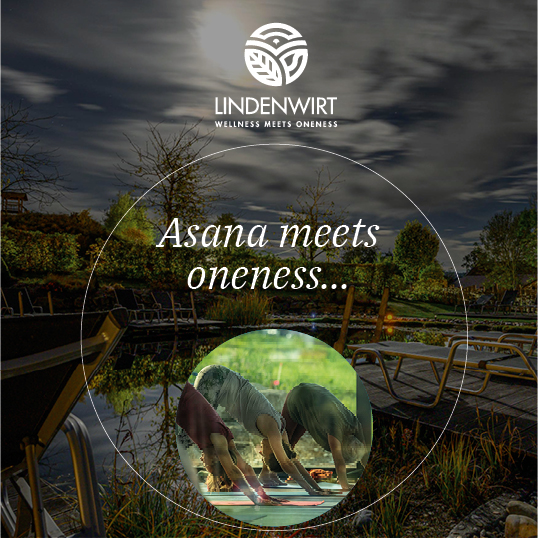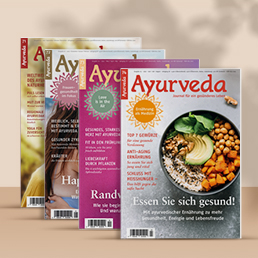Especially in times of great hectic, stress and many anxieties, we humans need more than ever a haven of peace and an oasis of well-being to which we can return and in which we can recharge our batteries. In most cases, this is understood to mean our home. But why not also transform our workplace or home office into a place of peace and strength?
Vastu briefly explained
Vastu is the residential and architectural doctrine from the Vedic period and closely related to Ayurveda. While Ayurveda shows us ways to lead a healthy life with the help of constitutionally appropriate nutrition and a lifestyle that suits us, Vastu helps us to live and work healthily and in harmony with nature. According to Vastu, houses, palaces and temple cities were built in India and throughout Asia. However, there are also many indications that Feng Shui goes back to Vastu and the pyramids of the Egyptians and the Mayas were built according to Vastu principles. But Vastu did not only gain a foothold in faraway places early on. Also our European building culture goes back to Vastu. The ten books on architecture by the Roman master builder Vitruvius, for example, have so many parallels to the Vastu writings that this cannot be a coincidence and a transfer of knowledge must have already taken place around Christ.
The central basic principles of Vastu
- The open center (Brahmasthan in Sanskrit, the atrium in Roman) of a residential or commercial building represents the heart and soul and should not be blocked if possible.
- Buildings should ideally face the main cardinal directions. This promotes connection to the earth and gives us stability and order.
- The northeast is considered the gateway of energy because, according to Vastu, there is a predominant flow of energy on Earth from north to south and one from east to west.
- The five elements of ether/space, air, fire, water and earth like to gather in certain places in space. Ideally, one places the room functions according to this elemental assignment.
The basis: order, clear areas and aesthetics
Vastu puts a lot of emphasis on order. Order on the outside brings order on the inside. If the desk and the entire office are a small chaos, it is noticeably more difficult to tackle the tasks to be done in a concentrated and focused manner. That’s why it’s worth tidying up and clearing out your office from time to time and briefly sorting out and filing away the many notes and papers on your desk before starting work.
It is also important to create clearly separated areas. If the work is away from home, this is already given by the geographical separation. But what if you work in a home office for a few days or even very often, as the situation during Corona required of many? Those who already have a separate room for the office are in a good position, because there is a spatial separation from other room functions such as sleeping, cooking or living. In all other cases, one should at least create an office niche or area with the help of suitable furniture or other design options.

Aesthetics are also very important in Vastu, because a space is seen as a living being in this teaching and is just as likely to be furnished with beautiful furniture, matching curtains, appealing art and decor, life-giving plants and good lighting as we are to like to dress up and look chic and stylish. The tidiness, a spatial demarcation and a suitable design all help to work in a more relaxed and concentrated way, and thus to master a successful working day with ease.
Transforming the workplace into a place of power
If you have different ways to arrange your workspace at home or at work, you can use the power of the cardinal directions in a targeted way. Always choose the appropriate areas from the center of the house, apartment or office building:
- The northeast represents spirituality, contemplation, but also everything that requires creativity, such as new ideas and project launches. The predominant element is water. Here all Ayurvedic constitutions are strengthened.
- The East represents health, breakthrough and success.
- The Southeast also stands for creativity in the form of art and aesthetics, but also everything that has to do with technology and heat. The predominant element is fire. Here especially the Pitta is strengthened.
- The south stands for hard work, diligence and perseverance.
- The Southwest stands for leadership and authority, but also for down-to-earthness and reliability. The predominant element is earth. Kapha in particular is strengthened here.
- The West stands for negotiations, deals, contracts and discipline.
- The Northwest represents creativity in the form of creative brainstorms, knowledge acquisition, communication and agility. The predominant element is air. Vata in particular is strengthened here.
- The North represents financial matters, thoughtful decisions, and calm emotions.
If such an assignment is not possible, the same principles can be easily implemented in the microcosm of a room. So, in a large living-dining room -again, seen from the center of this room- one can find suitable areas for the corresponding activities.
Once the work area has been determined, place the office furniture accordingly. If possible, a desk should be oriented so that one is facing north, northeast or east when working. Because these are the directions where, according to Vastu, energy comes from and one is continuously nourished by it. Heavy cabinets and shelves belong rather to the south or west.
Universally applicable Vastu principles for more well-being
Something sacred or uplifting should always be placed in the workplace. This regularly reminds us of eternity and can thus take pressure and stress out of everyday life. What exactly it is, everyone may decide for themselves (a small statue of Ganesh, an angel, Mother Mary with Jesus, a Buddha, a symbol, etc.).
To relax, calm and virtuous (in Sanskrit sattvic) music in the background also helps. This can be classical Indian ragas, but also meditative music, mantra music (in Sanskrit kirtan or bhajan) or simply classical or “loungy” music.
In order to walk in harmony with nature even on a small scale, the elements can be specifically placed even on the desk or in the office niche. In the northeast you can place a pitcher or a glass with fresh water. In the southeast, a candle or an oil lamp can strengthen the fire. In the southwest, an object made of earth, wood, clay or stone supports the element of earth. And in the northwest, something movable like a fan, air washer, or wind chime embodies the air element.
In this sense, even small or large consciously undertaken changes help to work more stress-free, focused and successful – and in the evening you can then also confidently let the work rest again and consciously enter the living area.















